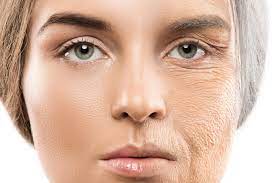
What are 4 warning signs of inhalant abuse?
One of the components in a health screening is a drug test. We may be familiar with drug abuse as the word itself directly makes us understand about it but have you ever heard of inhalant abuse? Inhalant abuse in general produces the same adverse effect similar to drugs and excessive alcohol. Hence, symptoms of a person abusing an inhalant may show the same symptoms such as in drug addicts or alcoholic people.
Inhalants are characterised by volatile substances producing chemical fumes which when inhaled create a mind-altering effect or a psychoactive effect. This term exclusively describes substances that are usually not taken by any other route except by inhalation. Inhalants itself are easily abused because there are more than 1000 household and workplace products potentially to be inhaled. This includes paint removers, paint thinners, gasoline, glues, spray paints, hair sprays, chloroform and nitrous oxide.
Many people would think these inhalants may not be harmful. This has caused teenagers and adolescents to contribute to the high number of inhalants abused. Poverty may cause young people to be involved with inhalant abuse since inhalants are relatively cheaper than drugs. Inversely, any inhalants are potential to cause permanent damages to the body system such as heart, kidney, liver and brain. It is quite worrying as inhalant abuse cases are taken lightly and overlooked. Inhalant abuse in early life may be a stepping stone for such people to become involved with illicit drugs in the future.
Since there are so many inhalants potentially to be abused, the only way to treat a person with such problems is by giving supportive treatments instead of specific therapy. Thus, it is important to spot warning signs of inhalant abuse so that the person can be helped and get the best treatment. 4 warning signs includes:
1- Chemical odours in the breath or on clothes, or visible pain chemical stains on face or fingers
2- A person appeared drunk, disoriented, looking confused or in daze. Often presented with red eyes, red and runny noses
3- Nausea and or vomiting
4- Slurred or changed of speech
Other signs include memory loss, muscle weakness and lack of coordination causing the person to easily fall or difficult to walk, visual disturbances, sore or irritation of the nose and mouth, easily tired, depression, insomnia, irritability, paranoia and convulsion. Generally, it is no easy job to precisely know what inhalants are being abused but the most important thing to note is to bring the abuser with addiction to a professional to get the help they need. In cases of emergency such as an abuser is unconscious or having breathing difficulty, bring them to an emergency room for prompt medical intervention.
As we can see, the number of inhalants abusers are mostly from the young generation. This number declines steadily as a person grows. The best way to prevent inhalant abuse is to focus on implementing awareness about the danger of such abuse. Dangers of sudden death, burns and flash fires should be emphasised to people at risk for inhalant abuse. Warning signs of inhalant abuse should be known by family and friends, especially parents towards their child. Practising a good way of managing stress and emotional distress such as anxiety and pressure, learning to improve personal relationships with everyone around them and training to build high self-esteem can help to lower cases of inhalant abuse. Aside from asking about the social history of tobacco, alcohol or drug uses, try asking about ‘huffing’ or ‘sniffing’ any substance such as with glue or paint to help gain a clear picture of the potential of inhalant abuse. Know about our Hajj vaccination program















